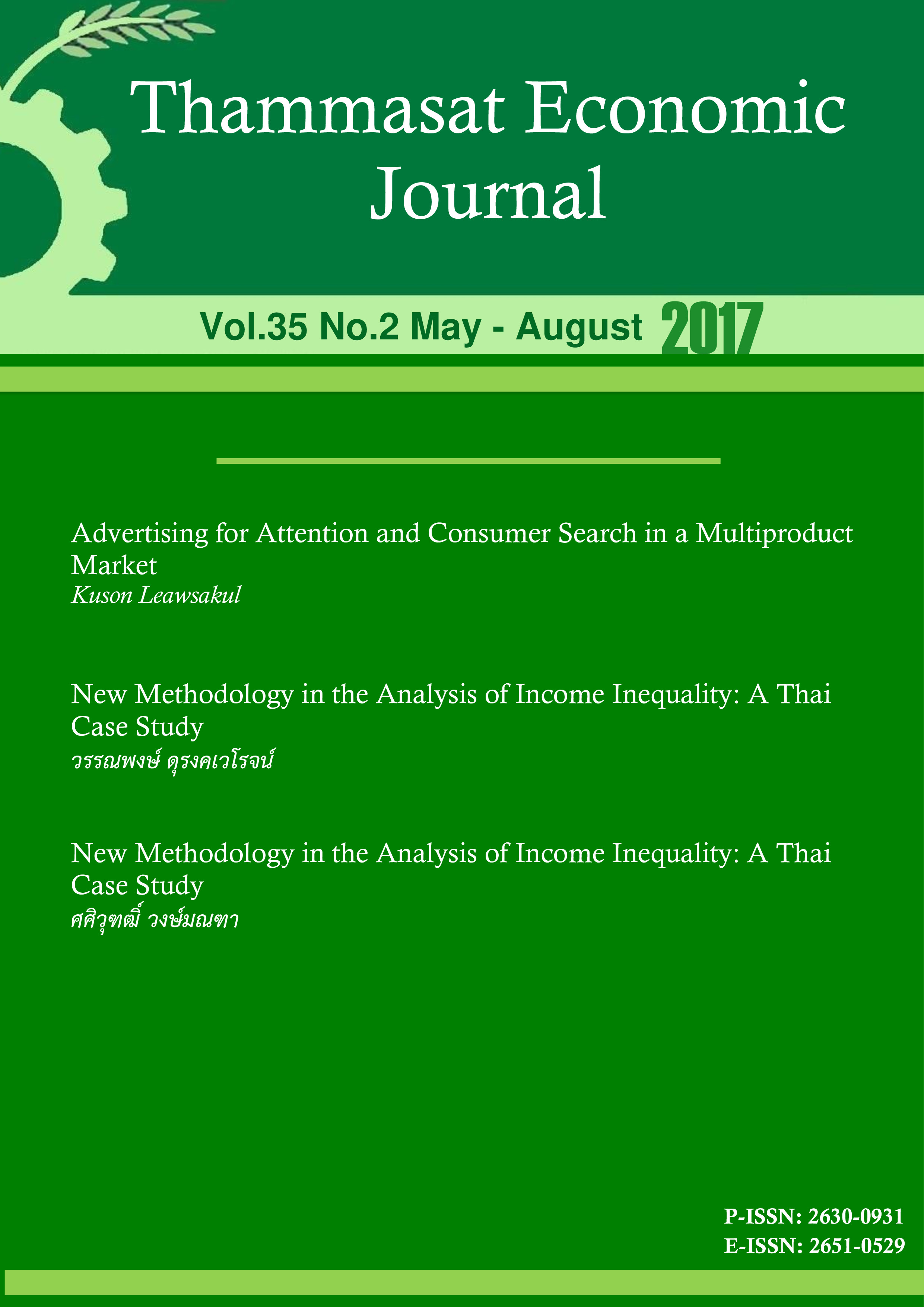Advertising for Attention and Consumer Search in a Multiproduct Market
Keywords:
Advertising, Assortment, Consumer Search, Game TheoryAbstract
This study investigates two favored strategies, advertising and product line manipulation. We consider multiproduct market when the consumers search order is biased. The consumers sequentially search firms offering substitutable products. Firms employ advertising to create saliency in consumer memories. The consumers receive adverting and then choose their search order. The firm that has lower advertising costs advertises intensively and induces more consumers at the first search. This salient firm maintains higher profits, charges lower prices and has broader assortments. With harder searching, more advertising, more salient products, fewer less-salient products, and higher prices are revealed. With changes in advertising technology, we find that the progress enhances social welfare only if it increases the technology gap between firms. Symmetrical development does not affect welfare. It culminates with more intense levels of advertising.
References
Anderson, S., & Renault, R. (1999). Pricing, product diversity, and search costs: A Bertrand-Chamberlin-diamond model. The Rand Journal of Economics, 30(4), 719-735.
Anderson, S., & Renault, R. (2009). Comparative Advertising: Disclosing horizontal match information. The Rand Journal of Economics, 40(3), 558-581.
Armstrong, M., Vickers, J., & Zhou, J. (2009). Prominence and consumer search. The Rand Journal of Economics, 40(2), 209-233.
Armstrong, M., & Zhou, J. (2011). Paying for prominence. The Economic Journal, 121(556), 368-395.
Bagwell, K., & Ramey, G. (1994). Coordination economies, advertising, and search behavior in retail markets. The American Economic Review, 84(3), 498-517.
Butters, G. (1977). Equilibrium distributions of sales and advertising prices. The Review of Economic Studies, 44(3), 465-491.
Cachon, G., Terwiesch, C., & Xu, Y. (2005). Retail assortment planning in the presence of consumer search. Manufacturing & Service Operations Management, 7(4), 330-346.
Cachon, G., Terwiesch, C., & Xu, Y. (2008). On the effects of consumer search and firm entry in a multiproduct competitive market. Marketing Science, 27(3), 461-473.
Casella, G., & Berger, R. (2002). Statistical inference (2nd ed., Duxbury advanced series). Australia: Thomson Learning.
Chamberlin, E. (1993). The theory of monopolistic competition. Cambridge, Mass.: Harvard University Press.
Diamond, P. A. (1971). A model of price adjustment. Journal of Economics Theory, 3(2), 156-168.
Draganska, M., & Jain, D. (2005). Product-line length as a competitive tool. Journal of Economics and Management Strategy, 14(1), 1-28.
Draganska, M., & Jain, D. (2006). Consumer preferences and product-line pricing strategies: An empirical analysis. Marketing Science, 25(2), 164-174.
Grossman, G., & Shapiro, C. (1984). Informative advertising with differentiated products. The Review of Economic Studies, 51(1), 63-81.
Haan, M., & Moraga-González, J. (2011). Advertising for attention in a consumer search model. The Economic Journal, 121(552), 552-579.
Kadiyali, V., Vilcassim, N., & Chintagunta, P. (1999). Product line extensions and competitive market interactions: An empirical analysis. Journal of Econometrics, 89(1-2), 339–363.
Kekre, S., & Srinivasan, K. (1990). Broader product line: A necessity to achieve success?, Management Science, 36(10), 1216-1232.
Kuson, L., (2014). Competitions from the product line in a consumer search model. Doctoral dissertation, Thammasat University, 2014. Faculty of Economics, Thammasat University.
Mas-Colell, A., Whinston, M., & Green, J. (1995). Microeconomics theory. New York: Oxford University Press Inc.
Rhodes, A. (2011). Can prominence matter even in an almost frictionless market?. The Economic Journal, 121(556), 297-308.
Varian, H. (1985). Price discrimination and social welfare. The American Economic Review, 75(4), 870-875.
Weitzman, M. L. (1979). Optimal search for the best alternative. Econometrica, 47(3), 641-654.
Wolinsky, A. (1984). Product differentiation with imperfect information. The Review of Economic Studies, 51(1), 53-61.
Wolinsky, A. (1986). True monopolistic competition as a result of imperfect information. The Quarterly Journal of Economics, 101(3), 493-511.










